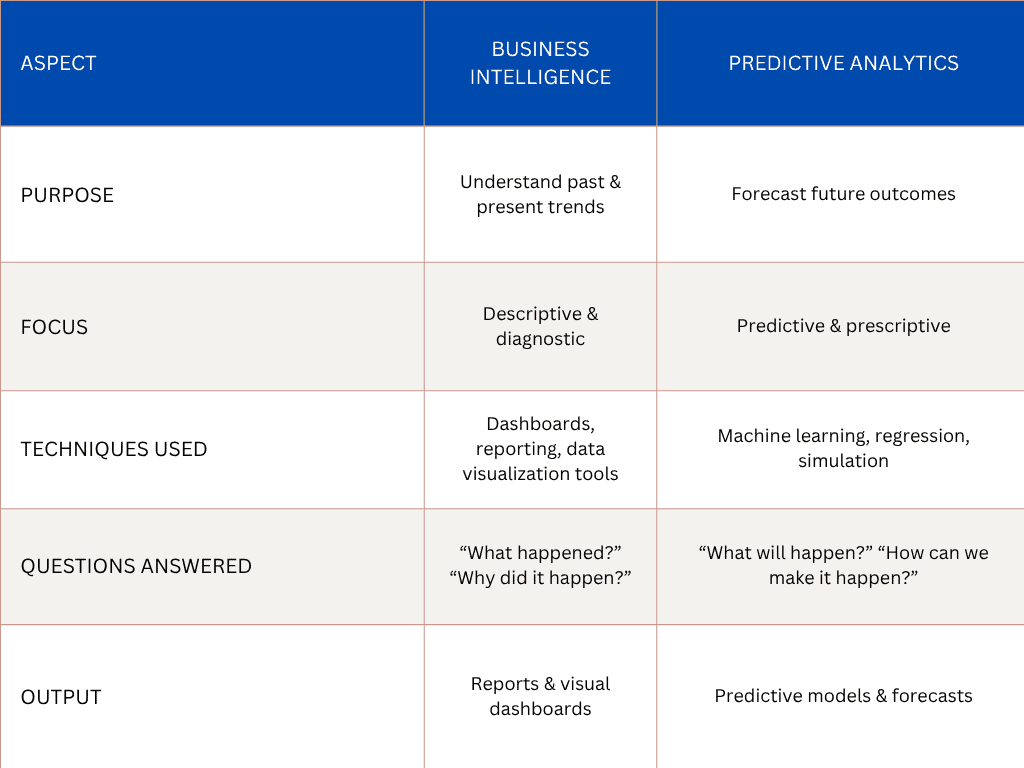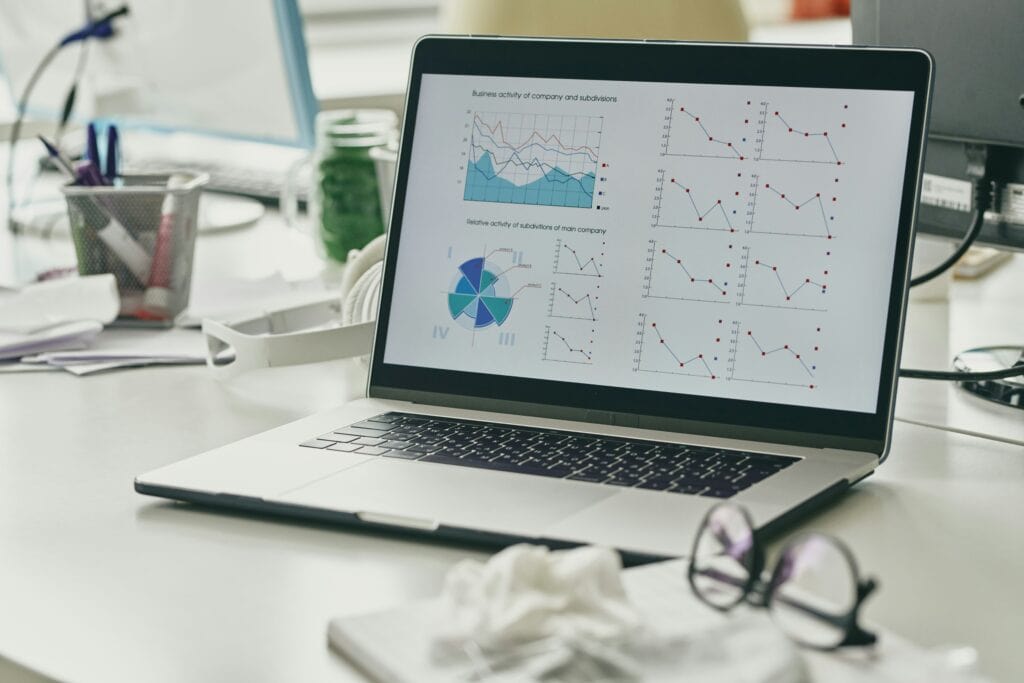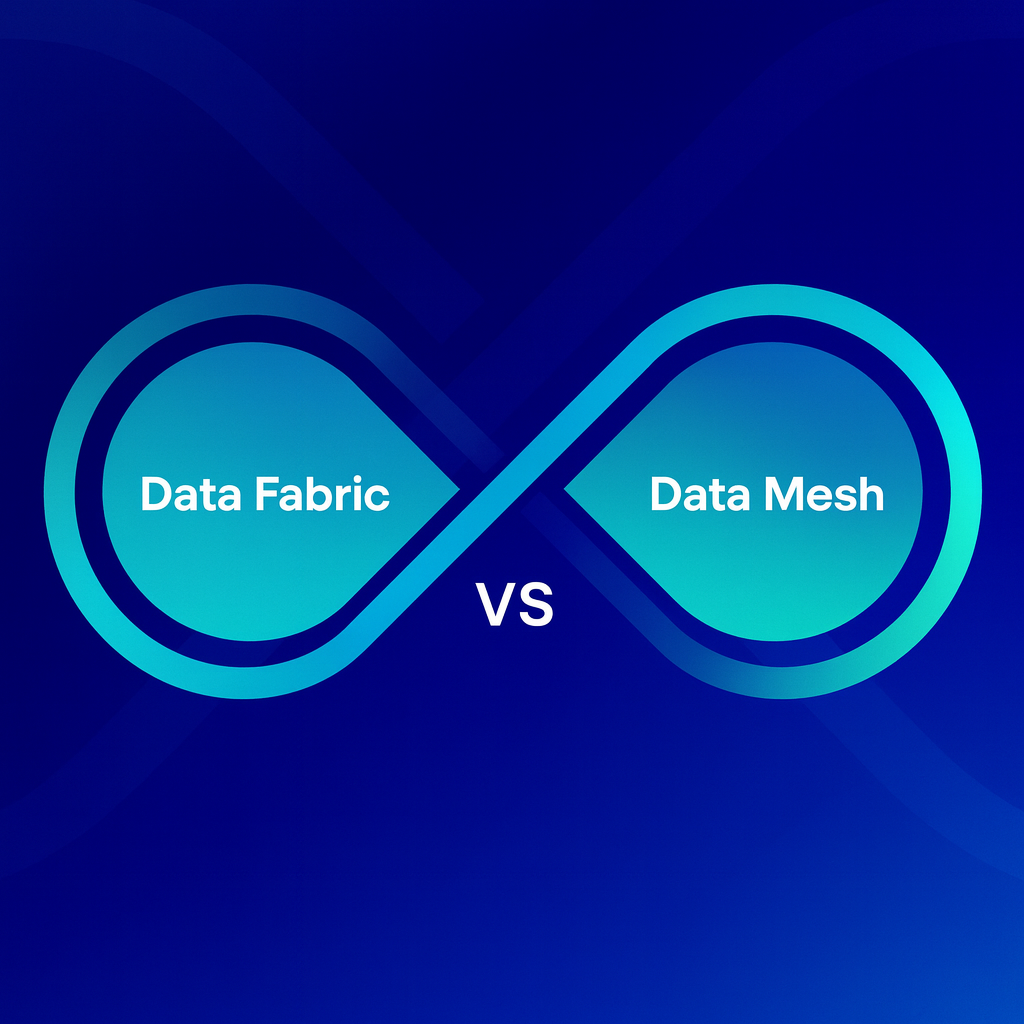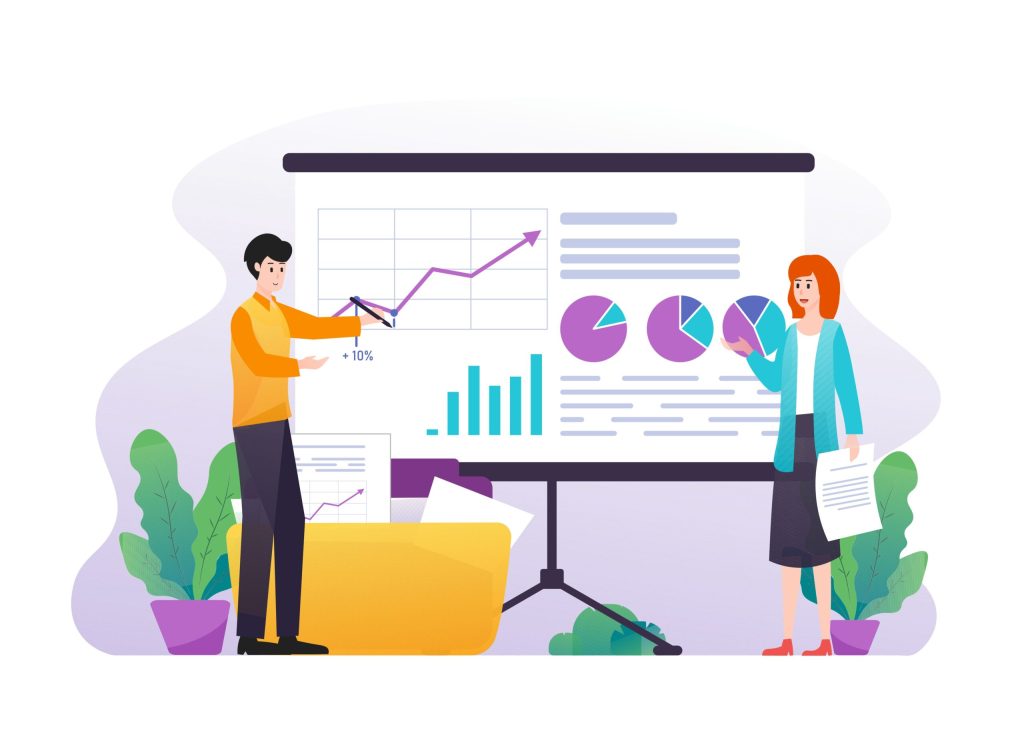Table of Contents
Introduction
In today’s data-driven world, making smarter business decisions depends on understanding your data — not just collecting it. That’s where Business Intelligence vs. Predictive Analytics comes into play. Both are powerful tools in the analytics ecosystem, but they serve very different purposes. Business Intelligence (BI) helps you understand what has happened, while Predictive Analytics helps you anticipate what could happen next.
For organizations striving for data-driven decision making, combining both can unlock extraordinary competitive advantages. Let’s break down the key differences, use cases, and how to leverage both for your business growth.
What Is Business Intelligence (BI)?
Business Intelligence focuses on descriptive and diagnostic insights — the past and present of your data. It helps teams visualize trends, monitor KPIs, and identify performance bottlenecks.
How Business Intelligence Works
BI uses data visualization tools, dashboards, and reports to aggregate information from various sources such as CRM systems, ERPs, and marketing platforms. The result? Clear, visual insights into company performance and operations.
At Engine Analytics, BI solutions that make Business Intelligence vs. Predictive Analytics integration seamless, helping companies turn raw data into actionable insight.
Key Components of Business Intelligence
Data Collection: Gathering data from internal and external sources
Data Cleaning: Ensuring accuracy and consistency
Reporting: Summarizing data for decision-makers
Visualization: Using dashboards for clarity and real-time monitoring
These processes empower organizations to make timely, informed decisions — forming the foundation of effective business data analysis.
What Is Predictive Analytics?
Predictive Analytics goes beyond describing the past — it forecasts the future. It uses advanced statistical models, machine learning algorithms, and predictive modeling techniques to identify potential outcomes and trends.
How Predictive Analytics Works
Predictive models analyze patterns in historical data to estimate the likelihood of future events. For example, a retailer can predict customer churn, or a financial institution can forecast loan default probabilities.
The insights derived help companies plan ahead, mitigate risks, and seize new opportunities — a critical advantage in today’s fast-moving markets.
In the context of Business Intelligence vs. Predictive Analytics, predictive systems provide the foresight BI alone cannot — enabling proactive strategy, not just performance tracking.
Key Components of Predictive Analytics
Data Mining: Discovering patterns in large datasets
Predictive Modeling: Building algorithms that anticipate future outcomes
Machine Learning: Continuously improving predictions based on new data
Scenario Analysis: Evaluating possible outcomes for strategic planning
Business Intelligence vs. Predictive Analytics: Core Differences

In short, Business Intelligence vs. Predictive Analytics isn’t about choosing one over the other — it’s about using them together. BI gives you the “rearview mirror,” while Predictive Analytics gives you the “crystal ball.”
How They Work Together
Businesses that integrate both BI and Predictive Analytics enjoy a full-spectrum view of performance — from past insights to future forecasting.
BI + Predictive Analytics = Smart Decisions
BI visualizes what’s already happened.
Predictive Analytics forecasts what’s likely to happen.
Together, they power data-driven decision making across every department.
For instance:
Sales teams can analyze historical trends (BI) and forecast future demand (Predictive).
Operations managers can monitor current efficiency (BI) and anticipate supply chain delays (Predictive).
Marketing teams can evaluate campaign performance (BI) and predict customer response (Predictive).
Explore how Engine Analytics services can help your organization implement both approaches for superior outcomes.
Practical Business Use Cases
1. Forecasting Sales and Revenue
Using BI dashboards, teams can monitor sales by region, product, or channel. Predictive models then forecast next quarter’s sales, helping allocate resources effectively.
2. Customer Retention
BI identifies customer churn rates, while Predictive Analytics anticipates which customers are likely to leave — allowing proactive engagement.
3. Inventory Optimization
BI tools track stock levels, and predictive models calculate future demand, minimizing overstocking or shortages.
4. Risk Management
Predictive modeling helps financial and insurance firms calculate risk probabilities and prevent losses.
5. Marketing Campaign Optimization
Combine historical performance insights with forecasting analytics to predict campaign success before it even launches.
Benefits of Combining BI and Predictive Analytics
Better Decision-Making: Real-time insights and future forecasts guide strategic moves.
Increased Efficiency: Identify inefficiencies before they impact operations.
Enhanced Customer Experience: Predict needs and personalize interactions.
Proactive Risk Management: Anticipate challenges before they arise.
Sustainable Growth: Data-backed forecasting improves long-term planning.
These combined capabilities help businesses transform from reactive to proactive, ensuring sustainable success through advanced business data analysis.

Challenges in Implementation
While the benefits are clear, integrating Business Intelligence vs. Predictive Analytics isn’t always simple. Common challenges include:
Data silos and inconsistent sources
Lack of data literacy among teams
High initial setup costs for analytics infrastructure
Resistance to adopting new technology
At Engine Analytics, we specialize in simplifying this process — delivering scalable solutions that bring BI and Predictive Analytics under one unified platform.
The Role of Data Visualization Tools
Visualization plays a critical role in both BI and Predictive Analytics. Using modern data visualization tools, decision-makers can interpret complex data at a glance.
Interactive dashboards transform static reports into actionable insights — making analytics accessible to everyone in the organization.
External tools such as Tableau and Power BI have revolutionized visualization, but Engine Analytics offers customized dashboard solutions that integrate seamlessly into your existing ecosystem.
Why Businesses Need Both BI and Predictive Analytics
In a competitive environment, relying solely on past performance isn’t enough. BI helps you understand what’s happening today, while Predictive Analytics prepares you for tomorrow.
For example:
A retailer can use BI to track daily sales.
Predictive Analytics can forecast how holiday trends might affect next month’s inventory.
Together, they form a data-driven decision-making framework that keeps businesses agile.
When implemented strategically, this duo bridges the gap between insight and foresight — turning raw data into growth opportunities.
Building the Right Strategy with Engine Analytics
At Engine Analytics, we help organizations of all sizes integrate Business Intelligence vs. Predictive Analytics through customized dashboards, reporting frameworks, and scalable data pipelines.
Our services include:
Custom BI dashboard development
Predictive modeling implementation
Advanced data visualization tools
Integration with cloud and on-premise systems
Discover our full range of services designed to make your analytics smarter and faster.
Conclusion
In the debate of Business Intelligence vs. Predictive Analytics, the real answer isn’t which is better, but how you combine them.
BI tells you what happened, while Predictive Analytics reveals what’s next. Together, they enable smarter data-driven decision making and sustainable growth.
If you’re ready to turn your business data into actionable intelligence, get in touch with Engine Analytics today and discover how we can help you forecast success with confidence.
Here’s Some Interesting FAQs for You
1. What’s the main difference between Business Intelligence and Predictive Analytics?
The core difference between Business Intelligence and Predictive Analytics lies in their focus and approach to data. Business Intelligence (BI) centers on descriptive and diagnostic analysis — it helps you understand what has already happened in your business. By using dashboards, metrics, and data visualization tools, BI provides clarity on performance trends, operational efficiency, and customer behavior. It answers questions like “What happened?” and “Why did it happen?” using clean, structured reports that support informed, real-time decision-making.
Predictive Analytics, on the other hand, takes things a step further. It uses statistical algorithms, predictive modeling, and forecasting analytics to estimate future outcomes based on existing data patterns. Instead of just showing what’s happened, it anticipates what’s likely to happen next. For example, it can forecast future sales, predict customer churn, or identify potential risks. While BI offers visibility into your current state, Predictive Analytics gives you foresight — enabling proactive, data-driven decision making that drives growth.
2. Can small businesses use Predictive Analytics effectively?
Yes, small businesses can absolutely benefit from Predictive Analytics, and it’s becoming increasingly accessible thanks to affordable cloud-based technologies. Modern analytics platforms — like those offered by Engine Analytics — allow small teams to leverage data science without needing expensive infrastructure or specialized IT support. These solutions can help forecast demand, optimize inventory, and identify emerging market opportunities, all from the same dashboard.
For small business owners, predictive modeling can be a game-changer. By analyzing past sales data and customer patterns, companies can anticipate future trends, target marketing efforts more effectively, and reduce financial risk. Predictive insights can also improve resource allocation — for instance, by helping decide when to ramp up production or launch seasonal promotions. In short, predictive tools level the playing field, empowering small businesses to compete with data-driven precision.
3. Why combine BI and Predictive Analytics?
When Business Intelligence and Predictive Analytics are combined, they offer a complete picture of performance — from what’s happening now to what’s likely to happen next. BI provides real-time visibility through clear reports and KPIs, while Predictive Analytics extends those insights into the future for better planning and risk management.
This integration helps businesses transform raw data into actionable foresight. With unified dashboards from Engine Analytics, organizations can make informed decisions faster, reduce uncertainty, and stay ahead of the competition — turning analytics into a genuine growth engine.
The core difference between Business Intelligence and Predictive Analytics lies in their focus and approach to data. Business Intelligence (BI) centers on descriptive and diagnostic analysis — it helps you understand what has already happened in your business. By using dashboards, metrics, and data visualization tools, BI provides clarity on performance trends, operational efficiency, and customer behavior. It answers questions like “What happened?” and “Why did it happen?” using clean, structured reports that support informed, real-time decision-making.
Predictive Analytics, on the other hand, takes things a step further. It uses statistical algorithms, predictive modeling, and forecasting analytics to estimate future outcomes based on existing data patterns. Instead of just showing what’s happened, it anticipates what’s likely to happen next. For example, it can forecast future sales, predict customer churn, or identify potential risks. While BI offers visibility into your current state, Predictive Analytics gives you foresight — enabling proactive, data-driven decision making that drives growth.
Yes, small businesses can absolutely benefit from Predictive Analytics, and it’s becoming increasingly accessible thanks to affordable cloud-based technologies. Modern analytics platforms — like those offered by Engine Analytics — allow small teams to leverage data science without needing expensive infrastructure or specialized IT support. These solutions can help forecast demand, optimize inventory, and identify emerging market opportunities, all from the same dashboard.
For small business owners, predictive modeling can be a game-changer. By analyzing past sales data and customer patterns, companies can anticipate future trends, target marketing efforts more effectively, and reduce financial risk. Predictive insights can also improve resource allocation — for instance, by helping decide when to ramp up production or launch seasonal promotions. In short, predictive tools level the playing field, empowering small businesses to compete with data-driven precision.
When Business Intelligence and Predictive Analytics are combined, they offer a complete picture of performance — from what’s happening now to what’s likely to happen next. BI provides real-time visibility through clear reports and KPIs, while Predictive Analytics extends those insights into the future for better planning and risk management.
This integration helps businesses transform raw data into actionable foresight. With unified dashboards from Engine Analytics, organizations can make informed decisions faster, reduce uncertainty, and stay ahead of the competition — turning analytics into a genuine growth engine.








